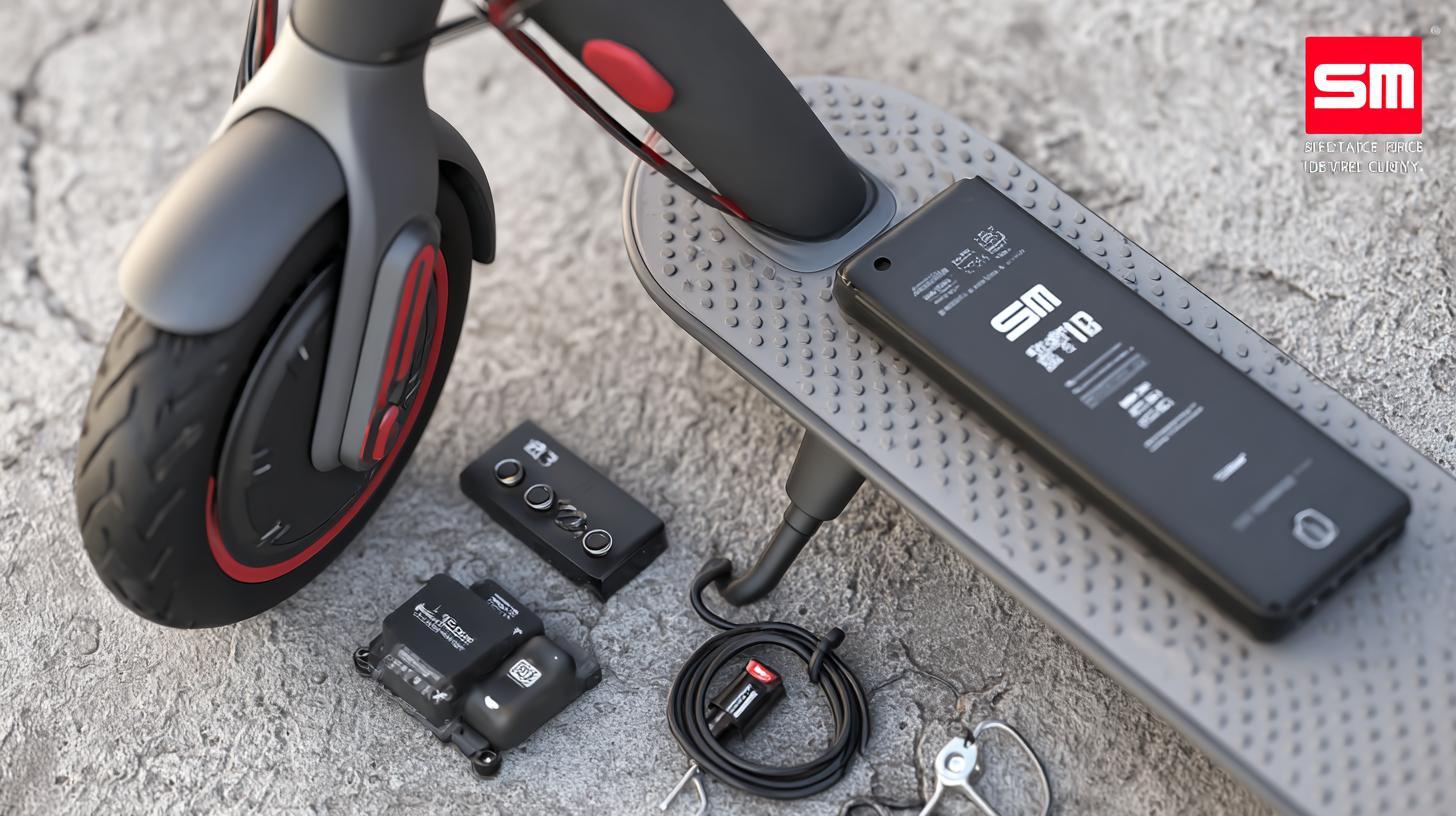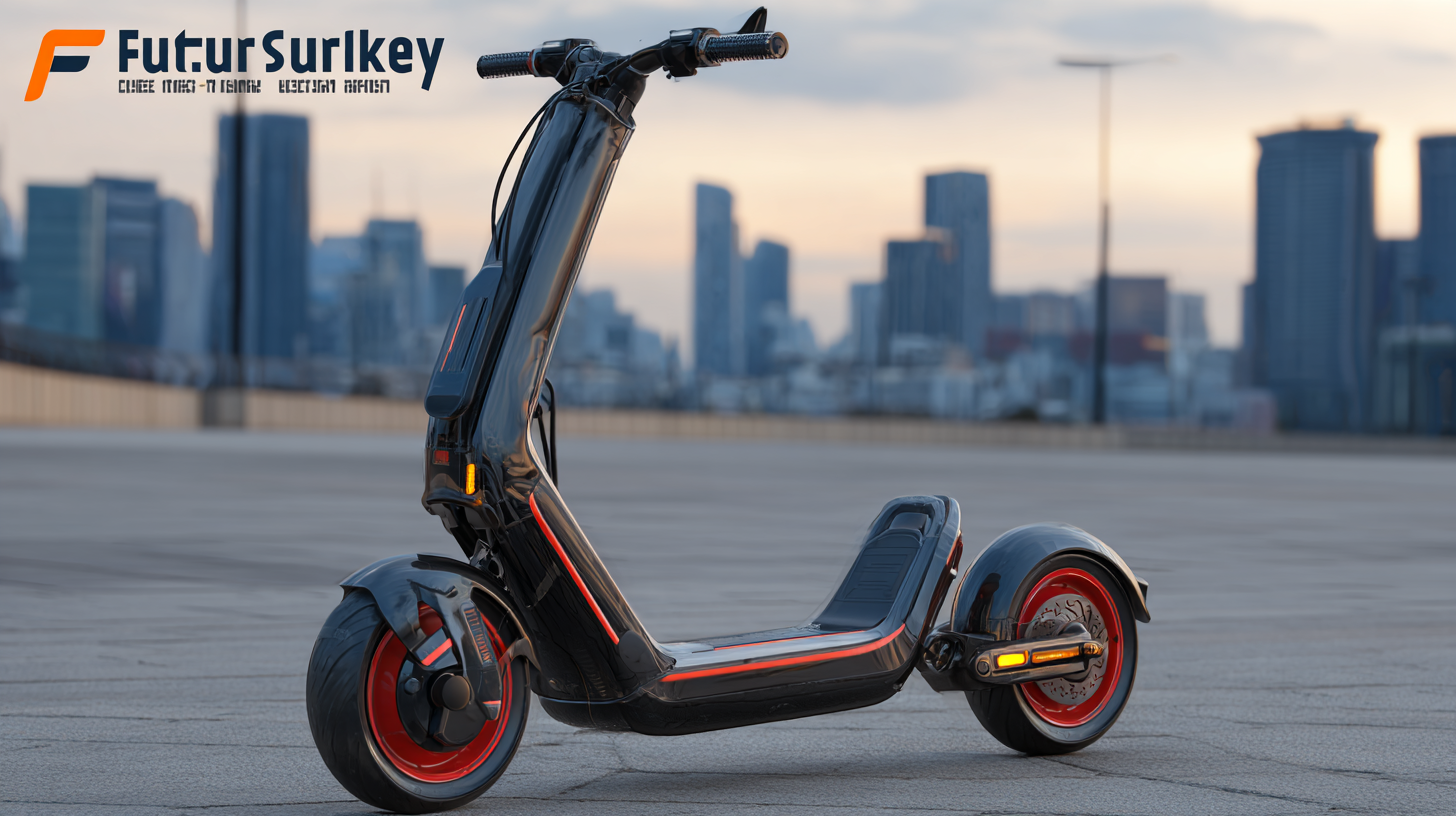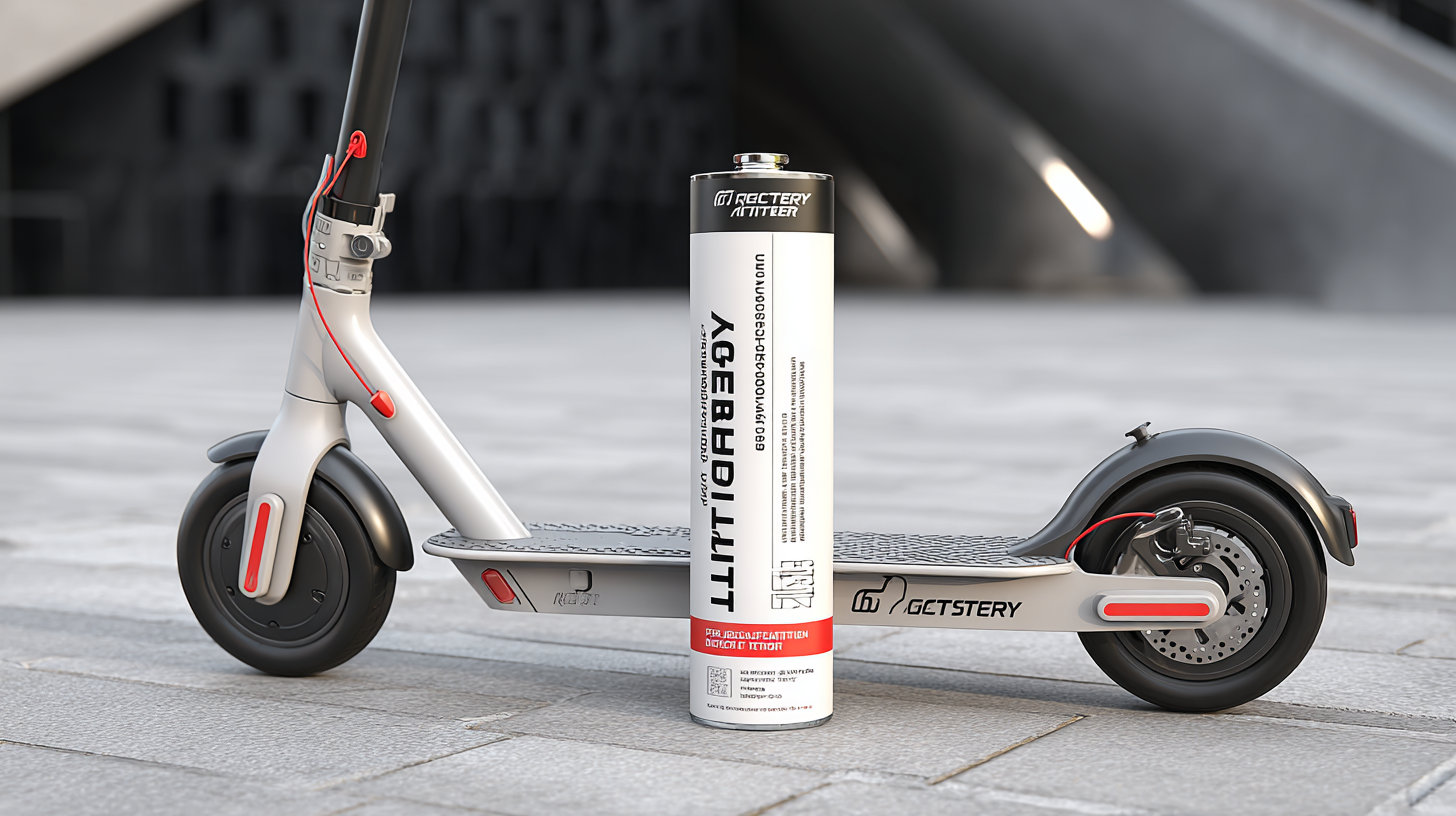- English
- Español
- Português
- русский
- Français
- 日本語
- Deutsch
- tiếng Việt
- Italiano
- Nederlands
- ภาษาไทย
- Polski
- 한국어
- Svenska
- magyar
- Malay
- বাংলা ভাষার
- Dansk
- Suomi
- हिन्दी
- Pilipino
- Türkçe
- Gaeilge
- العربية
- Indonesia
- Norsk
- تمل
- český
- ελληνικά
- український
- Javanese
- فارسی
- தமிழ்
- తెలుగు
- नेपाली
- Burmese
- български
- ລາວ
- Latine
- Қазақша
- Euskal
- Azərbaycan
- Slovenský jazyk
- Македонски
- Lietuvos
- Eesti Keel
- Română
- Slovenski
- मराठी
- Srpski језик

Future Market Analysis of Best Scooter Lithium Battery Innovations by 2025
The rapid advancement in electric mobility has significantly influenced the market for Scooter Lithium Batteries, which are essential for enhancing the efficiency and performance of electric scooters. According to a recent report by Grand View Research, the global lithium-ion battery market is expected to reach $129.3 billion by 2027, growing at a CAGR of 17.5%. This growth is largely fueled by the increasing demand for electric scooters as urban populations seek sustainable and convenient transportation solutions.

Innovations in battery technology, such as improved energy density and faster charging capabilities, are set to redefine the landscape of the scooter industry by 2025. As we explore the future market analysis of these innovations, it becomes crucial to understand the trends shaping Scooter Lithium Battery advancements and their implications for consumers and manufacturers alike.
Understanding Lithium Battery Technologies for Scooters: A Comprehensive Overview
As the scooter market continues to evolve, understanding the innovations in lithium battery technologies is essential for manufacturers and consumers alike. By 2025, the global lithium-ion battery market for electric scooters is projected to reach approximately $22 billion, driven by advancements in battery efficiency and energy density. Leading companies are investing in solid-state batteries and lithium-sulfur technologies, which promise longer lifespans and faster charging times. For instance, the latest innovations can achieve energy densities of up to 350 Wh/kg, significantly improving range and performance for electric scooters.
Tip: When considering a scooter, look for models that utilize the latest lithium battery technologies to ensure optimal performance and longevity.

Additionally, with the rise of smart battery management systems (BMS), safety and monitoring have become paramount. These systems are designed to prevent overcharging and overheating, which can lead to battery failure. Recent studies indicate that scooters equipped with advanced BMS can increase battery life by up to 30%. Manufacturers are also exploring the integration of IoT features, allowing users to track battery health and performance through mobile applications.
Tip: Always verify the battery management features of a scooter before purchase to ensure safety and longevity.
Diverse Types of Lithium Batteries: Features, Benefits, and Applications
As the popularity of electric scooters continues to rise, the demand for innovative lithium batteries is surging. Various types of lithium batteries are making their mark, each with unique features and benefits catering to different applications.
Lithium-ion, lithium polymer, and lithium iron phosphate batteries are among the most commonly utilized.
Lithium-ion batteries are known for their high energy density and long cycle life, making them ideal for everyday scooters that require extended range and performance.
On the other hand, lithium polymer batteries offer lightweight and flexible design options, which can significantly improve the overall efficiency and maneuverability of electric scooters. They are particularly favored in high-performance models where weight reduction is critical.
Additionally, lithium iron phosphate batteries, with their enhanced safety features and thermal stability, are increasingly being adopted in heavier-duty scooters meant for longer commutes. Each battery type presents distinct advantages, and understanding these differences will be key for manufacturers and consumers as they look toward the future of electric transportation.
Innovative Developments in Scooter Battery Designs for Enhanced Performance
The evolution of scooter battery designs is pivotal for enhancing performance, particularly as urban transportation becomes increasingly reliant on electric mobility. Recent advancements in battery technologies, such as solid-state batteries, promise remarkable improvements in terms of range, charging speeds, and safety features. As manufacturers strive to push the boundaries of electric scooter performance, innovations such as advanced sealing technologies are crucial for ensuring battery reliability in diverse environmental conditions.
Tips for enhancing scooter battery performance include prioritizing battery management systems that incorporate digital twins to monitor and optimize battery health in real-time. Understanding thermal management and implementing effective heat dissipation methods can further extend battery life and ensure optimal performance. Additionally, staying updated on the latest materials and technologies can provide a competitive edge in the rapidly evolving market.
The focus on organic materials for proton storage also opens up new avenues for energy-efficient designs, potentially leading to lighter and more efficient batteries. As companies explore integration with intelligent monitoring systems, scooter utilisateurs can expect a significant leap in the performance and sustainability of their rides by 2025.
How to Choose the Right Lithium Battery for Your Scooter: Key Considerations
When selecting the right lithium battery for your scooter, several key considerations must be addressed to ensure optimal performance and longevity. According to a market research report by the International Battery Association, the demand for lithium-ion batteries is expected to grow at a compound annual growth rate (CAGR) of 20% from 2020 to 2025. This growth is attributed to the increasing popularity of electric scooters as eco-friendly transportation alternatives. As scooter manufacturers continue innovating, choosing a battery with the right specifications becomes crucial.
Battery capacity is one of the most vital factors, as it directly affects the scooter's range and efficiency. For example, batteries with a capacity of 36V 10Ah can provide approximately 30-40 miles per charge, depending on factors such as rider weight and terrain. Additionally, it's essential to consider the battery's lifecycle—how many charge cycles it can handle before performance declines. Studies indicate that a high-quality lithium battery can typically last between 500 to 1,000 cycles, meaning that the choice of battery could significantly impact your scooter's operational costs over time. By understanding these considerations and investing in a suitable lithium battery, scooter enthusiasts can enjoy enhanced performance and sustainability on their rides.
Future Market Analysis of Best Scooter Lithium Battery Innovations by 2025
| Battery Type | Capacity (Ah) | Voltage (V) | Weight (kg) | Cycle Life | Charging Time (hrs) | Estimated Cost ($) |
|---|---|---|---|---|---|---|
| Lithium-ion | 10 | 36 | 2.5 | 600 | 4 | 150 |
| Lithium Iron Phosphate | 12 | 48 | 3.0 | 2000 | 6 | 180 |
| Lithium Polymer | 8 | 24 | 1.8 | 300 | 3 | 120 |
| Solid State Battery | 15 | 60 | 4.0 | 3000 | 8 | 250 |
Future Trends in Lithium Battery Innovations for Electric Scooters by 2025
 The electric scooter market is poised for significant advancements in lithium battery innovations by 2025. Industry reports indicate that the global electric scooter market is expected to reach a valuation of $41.98 billion by 2025, driven largely by improvements in battery technology. With a projected compound annual growth rate (CAGR) of 7.8%, lithium batteries are becoming lighter, more efficient, and capable of faster charging times, enhancing user experience and increasing the range of scooters.
The electric scooter market is poised for significant advancements in lithium battery innovations by 2025. Industry reports indicate that the global electric scooter market is expected to reach a valuation of $41.98 billion by 2025, driven largely by improvements in battery technology. With a projected compound annual growth rate (CAGR) of 7.8%, lithium batteries are becoming lighter, more efficient, and capable of faster charging times, enhancing user experience and increasing the range of scooters.
One of the most promising trends is the development of solid-state batteries, which are anticipated to provide greater energy density and improved safety features. According to a market research report by Grand View Research, the demand for high-capacity lithium batteries is expected to surge, particularly in urban areas where electric scooters serve as an eco-friendly solution for short-distance commuting. This evolution in battery technology will not only influence performance but also contribute to a decrease in overall costs, making electric scooters more accessible to consumers.
Tips: To maximize the longevity of your scooter battery, consider using a smart charger that regulates the charging process, preventing overheating. Additionally, storing your scooter in a cool, dry place can significantly extend the battery life. As innovations continue, staying updated on battery maintenance practices will enhance performance and reliability in the long run.
